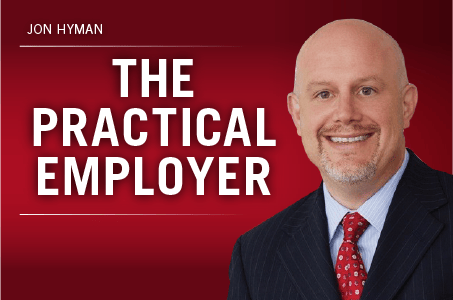Consider the following example. ABC Co. has a policy that states that an employee is entitled to a 12-week leave of absence for any medical reason, and thereafter the company cannot guarantee a job upon an employee’s ability to return to work. Does this policy pass muster under the Americans with Disabilities Act?
Opinions differ sharply on whether an employer can satisfy its obligations under the ADA by implementing a neutral leave of absence policy that caps a maximum allowable leave (for example, a policy that says, “Employees who do not return to work following a maximum of six months leave will be presumed to have resigned,” or “Employees will be entitled to a maximum of six months of unpaid medical leave in appropriate circumstances, and thereafter the company cannot hold the employee’s position open or guarantee a position to which the employee can return.”).
One opinion that is clear, though, is that of the EEOC. According to the commission, in its recently published guidance titled “Employer-Provided Leave and the Americans with Disabilities Act,” the answer is likely “no.” According to the EEOC, “the prevalence of employer policies that deny or unlawfully restrict the use of leave as a reasonable accommodation,” which the agency believes “serve as systemic barriers to the employment of workers with disabilities.”
In my experience, employers deny leaves because they are simply trying to do the best they can to balance the operational needs of their business against the medical needs of an employee. Sometimes the business wins. The EEOC is trying to level the playing field by making sure that employers consider leaves in all cases when appropriate.
The guidance is broken down into six key areas, which highlight various issues for employers to consider when employees need medical leaves of absence not covered by, or in addition to, the Family and Medical Leave Act.
- Equal access to leave under an employer’s leave policy. Employers must provide employees with disabilities access to the same leaves of absence rules as employees without disabilities.
- Granting leave as a reasonable accommodation. An employer must consider providing unpaid leave to an employee with a disability as a reasonable accommodation if the employee requires it, and so long as it does not create an undue hardship for the employer.
- Leave and the interactive process generally. After an employee requests leave as a reasonable accommodation, the employer should promptly engage in an “interactive process” with the employee, a discussion that focuses on the reasons for the leave, whether it’s blocked or intermittent, and its expected duration, which may include confirming information from the employee’s health care provider.
- Maximum leave policies. Policies that place a hard cap on an employee’s leave of absence, without consideration of modifications or extensions as reasonable accommodations, are unlawful under the ADA.
- Return to work and reasonable accommodation (including reassignment). Avoid “100 percent healed” policies, which mandate that an employee must be fully recovered before returning to work. They are unlawful. Instead, consider reasonable accommodations that will enable an employee to return before 100 percent healed, which might include transfer to a vacant position.
- Undue hardship. Depending on the duration and frequency of the leave and the effect on the employer’s business, the leave of absence might be an undue hardship that an employer need not offer. An open-ended, indefinite leave is always an undue hardship.
Employers need to be practical and tread very lightly around the issue of leaves of absences until the EEOC softens its position. The agency is aggressively pursuing businesses that enforce these neutral leave policies to the detriment of employees with disabilities. Unless you want to end up in the EEOC’s crosshairs, I recommend adopting the following “A-E-I-O-You” approach to employee medical leaves:
- Avoid leave policies that provide a per se maximum amount of leave.
- Engage in the interactive process with an employee who needs an extended leave of absence.
- Involve your employment counsel to aid in the process of deciding when an extended leave crosses the line from a reasonable accommodation to an undue hardship.
- Open your workplace to employees with disabilities to demonstrate to the EEOC, if necessary, that you take your ADA obligations seriously.
- You should document all costs associated with any extended unpaid leaves to help make your undue hardship argument, if needed.
Remembering “A-E-I-O-You” will help you avoid the defense of a costly disability discrimination lawsuit.
Jon Hyman is a partner at Meyers, Roman, Friedberg & Lewis in Cleveland. To comment, email editors@workforce.com. Follow Hyman’s blog at Workforce.com/PracticalEmployer.

